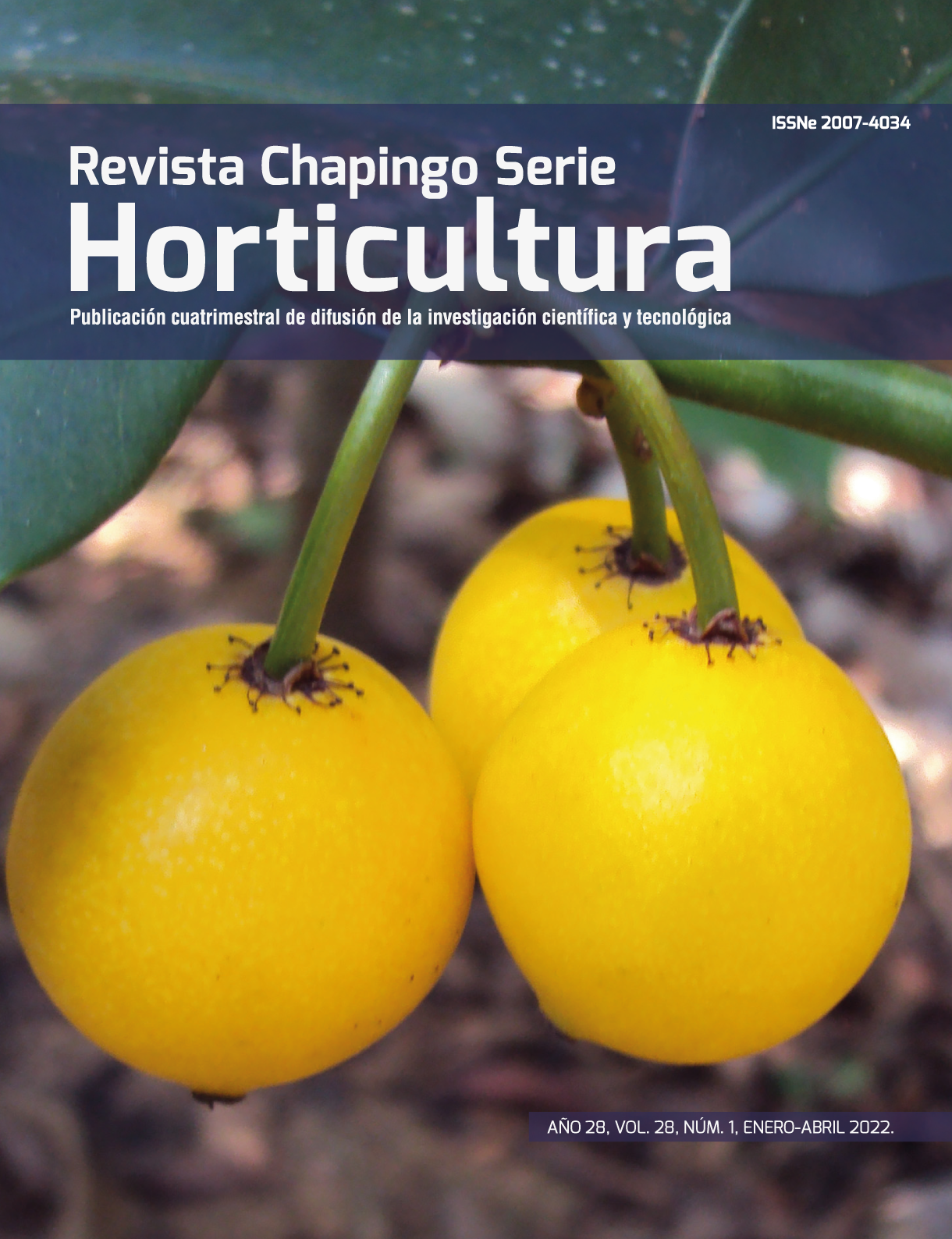The soursop is a species of tropical fruit well accepted by consumers due to its creamy white pulp
and excellent flavor. Currently, Mexico is the largest producer and consumer; however, the
agronomic practices in use were established without a systematic knowledge of A. muricata L.
phenology. The objective of this work then, was to conduct such a study in two of the main producing
regions of Mexico: Tepic and Compostela (both in the state of Nayarit). For this, a total of 20 ungrafted
trees were selected and their growth stages described using the extended BBCH-scale (Biologische Bundesanstalt, Bundessortenamt
und Chemische Industrie). Overall, eight main phenological stages
were identified over the course of a year. These were: the development of buds (stage 0), leaves (stage
1), and shoots (stage 3), the emergence of flowers (stage 5), flowering (stage 6), fruit development
and maturity (stages 7-8), and senescence of branches (stage 9). In addition, 37 secondary growth
stages were also described and quantified. The highest number of vegetative shoots occurred
from March-July, 2017 and the biggest increase in floral structures from July–September, 2017.
Fruit setting to physiological maturity took an average of 114 days in both Tepic and Compostela,
with the most intense defoliation occurring in October, 2017 in the former (Tepic) and in December,
2016 in the latter (Compostela). Hopefully, improved agronomic practices will be established using
this information, as well as suitable protocols for future physiological studies.


